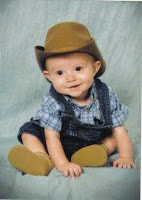
Thanks,
Patricia
We all have to work, but who says we can't enjoy it too! My goal for this blog is to give good tips and ideas and occasionally put a smile on your face as you start your day! Let's enjoy our day together. © Copyright Patricia Robb 2018

Patricia
Word 2007
You will need to activate the Developer Tab.
To add a checkbox:
OK so I don't love it, but I do enjoy it.
I have always enjoyed the places I worked. When I interview for a job I interview the person interviewing me and try to get a feel for whether we will work well together. That has always helped me to determine whether I take a job.
Good boss, bad boss
On one interview I went on, when I met the two men who would be interviewing me, I met the first one and thought, "OK, so he seems like a nice man and I could work with him." When the next man walked in I thought, "Absolutely not, I could never work for him." When we proceeded with the interview it was the second man however that I connected with. It taught me never to judge a book by its cover. Once he opened his mouth I found he was entertaining, smart and easy to get along with. Both men ended up being great to work with. Unfortunately, both of my bosses have since moved on and I was put in another area that I didn't feel was challenging enough so I decided to look for another job.
Now I have gone on another interview and I hit it off right away with my new employer. He is smart, funny and seems to not only need an assistant, but appreciates having one. Those are some of the main ingredients for a fulfilling job in my books. Your boss can make the difference on how much you enjoy your job.
But I don't know everything yet...
My new job is filled with challenges. I took the job knowing I would have a learning curve in a few areas, but that has made it more interesting. Sometimes doing something that is a little outside our comfort zone ends up being just right.
One of the things I am required to do is take minutes and I have avoided having to do that for 25 years. But guess what? I found that I enjoy it. Who knew?
Whistle while you work
I don't mind hard work, but I do like to have fun while I work and when I can I like to joke around with my boss and co-workers. I think it makes it more interesting not only for me, but for those I work with.
That is the message I try to give my readers. We all have to work, but we can have fun too. We spend too much time at work for it to be boring and ho hum all day long. There is a time however when we have to knuckle down as we are running around in many different directions, but at the end of the day we can laugh with each other and enjoy having accomplished a job together and with good humour.
The first thing I noticed about this new job is that they pay attention to what I think in areas of the office that are typically the administrative assistant's expertise. At many offices I find they make decisions without our input and then wonder why it doesn't work. I am enjoying being taken seriously as a professional.
So why do I like my job?
It has all the ingredients that I want in a job. It is challenging, but not too much out of my area of expertise. My input counts so I feel needed and appreciated. There is room to grow in my profession, but most importantly, I like my boss and that makes all the difference in the world.